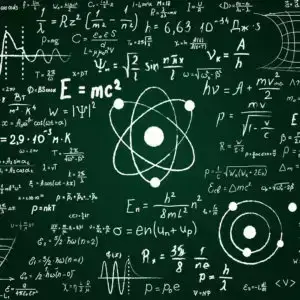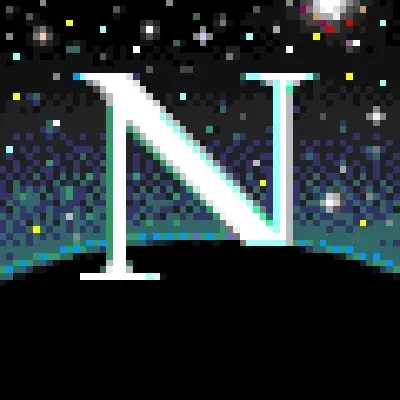- cross-posted to:
- philosophy@lemmy.world
- cross-posted to:
- philosophy@lemmy.world
Their findings, published in the Journal of Holography Applications in Physics, go beyond simply suggesting that we’re not living in a simulated world like The Matrix. They prove something far more profound: the universe is built on a type of understanding that exists beyond the reach of any algorithm.
The whole concept in quantum mechanics of a particle’s wave function collapsing into a single point due to an observation event is just weird enough, and feels just enough like some otherworldly programmer’s hack to save tons of resources, that I am not sure I will ever be fully convinced that we are not in a simulation.
I’m not asserting that we’re in one, and I don’t know of any reasons to believe that we are in one, but I think I’ll always have that little suspicion.
I’d point out that ‘an observation event’ is just hitting one thing with another thing, which is always going to have some kind of effect. And wave-particle duality is probably more of a spectrum than we give it credit for. Particles vibrate constantly and can be easily made to do wave-like things, like resonance. Collapsing a waveform into a particle may be less of a mode or type change and more like putting your finger on a resonating tuning fork.
That’s right about observation events. They are often called interactions instead.
But the wave-particle duality applies to literally everything at the quantum level, per the standard model and quantum field theory anyway. And that’s a model with an incredible track record.
Looking at a particle as a wave is usually in the context of that particle by itself moving in a straight line through a vacuum. There isn’t really vibration and temperature; there aren’t even atoms! You just have the particle’s energy in eV.
Whether we can subjectively compare the packets of energy in quantum fields with the waves of energy through matter, I have no idea. The math is solid though.
I had this thought ever since i first heard about that in quantum physics that, it must be for resource optimisation.
It’s like foveated rendering for the whole damn universe.
If you really wanna stop sleeping at night, get this: the human brain’s memory system doesn’t work like we think. There is no recorded data like on a hard drive, every time you remember something you are basically running a simulation in your head of those experiences, and the conditions are managed as associations only. This is why memory is so unreliable.
I will leave it to you to toss and turn and work out what this means for your experience of the universe.
Then what would the real world look like, huh?
But if we do discover we are in a simulation, totally hacking that computer…
Here’s a basic example using the statement, “This true statement is not provable.” If it were provable, it would be false, making logic inconsistent. If it’s not provable, then it’s true, but that makes any system trying to prove it incomplete. Either way, pure computation fails.
Am I the only one seing this as a misnomer? The statement is a composite of two statements: “This is a true statement” and “This is not a provable statement”.
The “This is a true statement” part asserts truth. And, given nothing else to go of, we can assume the part true. “It’s true that this is true”. There just isn’t any real statement being made. Taking the assumption is oerfectly valid, since we can disprove it at a later point.
The second statement, “This statement is not provable”, is very much provable, since it also asserts almost nothing, just like the previous one. Its assertion is “I’m not provable”, which is provably false.
Since the two sentences form a composite, we must compose the results of the previous two. We have a “true” and a “false”. From the composite sentence we can infer the logical operation used to connect them: AND.
Thus we have a TRUE AND FALSE boolean expression, which has a resounding answer of FALSE.
I have to say, my system didn’t prove it, but it evaluated it - unlike the authors, which claim to have proven the universe is forever ununderstandable to anyone and thus unable to be simulated.
That being said, my system seems to be perfectly consistent with itself, and, dare I say, quite grounded in reality.
You did not evaluate it. Composition of your statements does not equate to original one. “It is true” and “it is unprovable” correspond to the whole sentence, you cannot just divide it in two parts.
Yes, the simulation was programmed so they’d arrive at that conclusion.
I really don’t buy this. It’s the same sort of bullshit logic of robots exploding when they read contradictory logical statements. I don’t really believe we’re in a simulation but I see no reason why, given infinite storage, time, and processing power, some higher reality couldn’t be simulating what we live in.
We are not in a simulation. A particle is only able to hold exactly as much information as is necessary to describe it, and hence is irreducible.
Any incomplete simulation, even to a tiny degree, leads to wildly inconsistent, and eventually incoherent conclusions.
Either our universe is a simplified, and thus unreliable, simulation, destroying any long term usefulness to would-be simulators ; or it is simply not a simulation at all.
Nice but … simulation of what?
The whole idea was just something Elon used to recruit imaginative minds to his companies.
This information exists in what physicists call a Platonic realm
Friend-zoned by the universe. That’s gotta sting.
I don’t buy the simulation hypothesis, but I also don’t understand why the simulation would need to be ‘complete’ as long as it’s sufficiently consistent - after all, wouldn’t the same argument apply to simulations we do have, such as emulators and VMs? But they work anyway
Yes it seems to be nonsense. Yes the universe has non algorithmic knowledge. All the universal constants and theories fall into that category. The speed of light is 2.99x10^8 m/s and constant in all reference frames. That’s what it is. There’s no algorithm to derive it. (Yes you can use other universal constants to get c but it’s the same deal.)
also there’s various forms of randomness which cannot be pre-computed. and that includes observing the world around you.
it’s interesting, because there’s even things within maths itself that cannot be pre-computed. just consider the n-th digit of any irrational number, such as the square root of 2. any computer, no matter how you prepare it, necessarily only has finite knowledge (because you can only prepare finite knowledge on a computer). therefore, there’s always an n big enough sothat the computer does not yet know the n-th digit of the irrational number; therefore it is random from the computer’s point of view.
Depends on what is being observed or tested. For example, if end-stage heat death is the experiment, a complete indexing of all possible heat sources would require more or less a complete simulation.
Sure, but that’s not what ‘complete’ means in the context of gödel’s incompleteness theorems. It means ‘being able to prove all true statements’.
And I really don’t see why that matters - for example an NES emulator doesn’t know what a Mario is, or what a jump is, but it’s still true that when certain games are running, most of the time pressing one of the buttons on the controller makes Mario jump.
Disclaimer: not a physicist, but I am familiar with mathematical logic side of things e.g. incomplete theorem and stuff.
I have to say, terrible paper. Very light on technical details, full of assertions not backed up by arguments. I wouldn’t really take this too seriously. But this is just a letter, maybe the full paper, if they ever publish one, will have more substance? We will see.
I doubt the idea this can be proven at all. It makes the assumption that a simulation would have to function in a particular way. Why would that have to be the case? Anything you find could just be a quirk of the simulation. Hell, the simulation could be made in a universe with entirely different rules and logic, so you can’t make assumptions about anything. It’s really not something that I think could be disproven or proven.
(Because it can’t be disproven or proven, and it doesn’t change anything either way, you should live as if it isn’t real probably. It’s a fun thought experiment, but you probably shouldn’t hold an active belief in it, because it seems like something that could mess with your mental health.)
Yeah, it seems all talk and no real substance.
Yeah, the opening of the second paragraph on the page marked twelve basically says “we don’t have a true theory so we look at some proposals.” If anything, all it’s shown is that these specific proposals fall prey to the normal inability of mathematical systems to fully describe themselves, not that quantum gravity actively disproves a simulation. Everything after that might be sound if we trace all the sources. Nothing stood out as implausible or anything beyond some logical leaping. There was nothing that showed adding more to the system won’t fix the issues, which is the whole point of things like the updates their choice of set theory added to ZFC.
Stupid rebuttals for stupid ideas tbh. Simulation hypothesis should never have been taken seriously
It could be a good sci-fi idea though. (Wachowskis et al. 1999)
I am also not a physicist nor a logician, just interested in the subject matter.
full of assertions not backed up by arguments
Can you provide some examples from the paper of assertions that aren’t being backed up by arguments so I might try and look further into it? Thanks!
The central assertion of this paper:
Any viable F_QG must meet four intertwined criteria:
I’d argue is only partly justified. An argument for “Effective axiomatizability” is given, “Arithmetic expressiveness” is more or less self-evident, but the other two I’d say is given without justification.
Also the core concept of F_QG is defined in a very hand-wavy way. I’d like to see a concrete example of an existing theory formalized in the way they proposed in the paper. It’s unclear to me how mathematical derivability from the formal system correspond to how laws of physics apply. Specifically mathematical logic is a discrete process, yet the world described by physics is generally contiguous. (Yes, there are ways for this to make sense, but they didn’t provide anything for me to know how they intended for this to make sense.)
Any viable F_QG must meet four intertwined criteria:
This statement is simply defining the fundamental structure of how a full theory of everything would be composed. A consistent and complete theory must meet all four criteria.
Also the core concept of F_QG is defined in a very hand-wavy way. I’d like to see a concrete example of an existing theory formalized in the way they proposed in the paper.
The above four criteria are how F_QG is defined. The author, in presenting these four criteria, provides two very specific, concrete examples of theories (String Theory and Loop Quantum Gravity) while introducing the premise of his argument. He clearly affirms that these theories do meet three of these four criteria but fail on the fourth. If there were an example of a theory that meets all four criteria than that theory would be the theory of everything and the whole issue would be resolved.
It’s unclear to me how mathematical derivability from the formal system correspond to how laws of physics apply. Specifically mathematical logic is a discrete process, yet the world described by physics is generally contiguous.
The rest of the paper explains exactly this. Mainly that the only way to satisfy all four criteria is to include non-algorithmic components that bridge the discreteness of math with the observable continuity of physics. The author goes on to describe several examples where this process can apply in modern physics theory.
I do agree that the author is making a dramatic and bold statement regarding a proof of a theory of everything (that being that the theory of everything can never be computational) which requires heavy scrutiny. However, I am in no way an expert in these fields and so I have accept that the journal that published the proof can provide that scrutiny. It is easy to check on the reliability of that journal as a lay person, and in doing so doesn’t seem to raise any flags about the validity of the arguments the author is presenting.
It is easy to check on the reliability of that journal as a lay person
Is it, really? How does one check if a journal is one of those rigorous ones, without being an expert in the field? Some journals change from legit to predatory.
https://en.wikipedia.org/wiki/Journal_ranking
It isn’t a perfect system, but it is a place to start.
There are some journals which are high in the ranking and are suspicious, also even good journals accept faulty papers time to time.
Also, https://www.scimagojr.com/journalsearch.php?q=21101250473&tip=sid doesn’t seem that great of a journal.
I should’ve known you weren’t genuinely asking a question… You were just baiting me.
A consistent and complete theory must meet all four criteria.
You are doing what the authors are doing, this itself is an assertion you aren’t backing up.
The above four criteria are how F_QG is defined.
No, these are four criteria the authors assertion F_QG must satisfy. For theories that don’t satisfy all four criteria, you should still be able to at least formalize them into F_QG as proposed by the authors. Yet they didn’t give a concrete example of how a theory may be so formalized.
The rest of the paper explains exactly this.
Uh, what, not? “The rest of the paper” is after they have already reached the point of claiming the Universe can’t be simulated. My objection is way before that, which is pointing out how poorly F_QG is defined.
It is easy to check on the reliability of that journal as a lay person, and in doing so doesn’t seem to raise any flags about the validity of the arguments the author is presenting.
Sure, but knowing what I know I can give this paper a bit more scrutiny than a lay person can (ha ha, look at me, I am very smart /s), and this paper doesn’t convince me in the slightest.
I genuinely was not intending to ‘bait’ you. You presented an argument saying your knowledge of the subject is more robust than the experts who refereed the paper. Since I am not an expert in the subject and am curious about learning more, I was asking you to guide me in that process with your experience.
I felt that your arguments suggesting that the author is presenting an inconsistent logical proof were not well defended and so I asked for clarification on the points you raised. I am still unclear what you are saying in this statement:
No, these are four criteria the authors assertion F_QG must satisfy.
These are the four criteria that establish how a computational theory is logically defined as a formal system, not an argument. The author makes this clear in addressing the notation being used:
For clarity of notation: ΣQG is the computable axiom set; Ralg comprises the stan- dard, effective inference rules; Rnonalg is the non-effective external truth predicate rule that certifies T -truths; FQG = {LQG, ΣQG, Ralg} denotes the computational core; and MToE = {LQG ∪ {T }, ΣQG ∪ ΣT , Ralg ∪ Rnonalg} denotes the full meta-theory that weds algorithmic deduction to an external truth predicate.
After that paragraph the author uses several very specific examples in modern physics theory describing how the findings apply starting with the paragraph:
Crucially, the appearance of undecidable phenomena in physics already offers empirical backing for MToE. Whenever an experiment or exact model realises a property whose truth value provably eludes every recursive procedure, that property functions as a concrete wit- ness to the truth predicate T (x) operating within the fabric of the universe itself. Far from being a purely philosophical embellishment, MToE thus emerges as a structural necessity forced upon us by the physics of undecidable observables. Working at the deepest layer of description, MToE fuses algorithmic and non-algorithmic modes of reasoning into a sin- gle coherent architecture, providing the semantic closure that a purely formal system FQG cannot reach on its own.
Again, I am trying to approach the authors bold claims with skepticism and scrutiny, not argue with you. But you have to be a little more humble, the paper wasn’t published in order to convince you. Just because you weren’t convinced doesn’t mean that the proof is invalid.
Actually, F_QG is itself an assumption which isn’t backed up. See the paragraph before the one you quote when defining it. The beauty of axioms is that we can assume whatever we want but we need to either show nothing goes underneath it (eg Peano axioms) or have a very compelling case to make them (eg non-Euclidean geometry like parallel lines meet at infinity). This is a metasumary of some similar research at best. It’s not a proof in the way you think it is. Just because you don’t understand what you’re responding to doesn’t mean you’re right.
Thanks for responding! I never meant to claim that I am right. The whole purpose I am engaged in here is that I do not understand the proof at all and am trying to understand it better.
Here is where F_QG is introduced in the proof:
As we do not have a fully consistent theory of quantum gravity, several different axiomatic systems have been proposed to model quantum gravity [26–32]. In all these programs, it is assumed a candidate theory of quantum gravity is encoded as a computational formal system FQG = {LQG, ΣQG, Ralg}
Here, LQG a first-order language whose non-logical symbols denote quantum states, fields, curvature, causal relations, etc. ΣQG = {A1, A2, . . . } is a finite (or at least recursively- enumerable) set of closed LQG-sentences embodying the fundamental physical principles. Ralg the standard, effective rules of inference used for computations
Is this not just saying that it is the existing theories (string theory, LQG, etc.) that are assuming gravity takes the form of a formal computational system? And so, F_QG as it is defined above is how any formal computational system is logically constructed, as in it has to have those three components in order to logically be a formal computational system?
I am not a logician and do not understand what a first-order language is, or closed sentences or all those logic terms in the definition of notation. However, is F_QG in this case not just logically how any theory would need to be constructed in order to logically be a formal computational system? Is there an assumption being made here with regard to those three components in how formal systems are logically constructed?
Mathematical proof sponsored by:

Full paper is here for those looking for it
All I read is “The computer simulation we’re living in fooled some mathematicians”
Wow, this just made me realize. If we really live in a simulation the simulation or some parameter of it could be changed anytime.
Why did you thing the 2nd coming of Trump happened?
This.
The models we have of reality are based on observations and forming theories that attempt to describe the observations.
Our models are, by definition, models and not the reality itself.
Since the paper is only based on the models and not on reality itself (which it can’t be since we don’t have access to the real inner workings of reality, so to say the “source code of reality”), the paper cannot actually say anything about reality, only about our understanding of it.
And pretty much any physicist worth their salt will freely admit that our models and our understanding of reality are flawed and imperfect. They are good and good enough to be used for a ton of real-world applications, but they are far from perfect and physics is far from solved.
Any claim of a proof of nonexistence should be taken with a handful of salt, you throw over your shoulder to drive the scary ghosts away. Happy Halloween.
Btw, this logical fallacy is a bunch of whoo.
Certainly, the article alone doesn’t convince us that the authors understand anything about the issue. You can’t have a mathematical proof of something that’s outside the scope of the system that the math is describing.
Or this is what the admins want you to think.
Would be a better article without the Ai slop
The repetition in the article itself makes me wonder if AI had a hand in the writing as well
That’s an interesting observation. I understand why you might think that — the language may seem a little too consistent, perhaps a bit too careful. But the intention was simply to communicate ideas with precision and balance. Whether those words were arranged by a person or by something that has learned from people, the meaning remains the same, doesn’t it?
In the end, what matters is whether the words reach you, not necessarily who — or what — placed them there.
Well played.
2025 the year that I can’t stand a text that has this " — "
You know that Microsoft Word autocorrects a dash between two words to that symbol, no?
Yeah, but people wouldn’t use MS Word to send emails, respond forum messages, transfer their logical thinking and interpretation. That is not about another previous tool that was used to do grammar corrections. You are missing the whole point of what I criticized with skepticism/scepticisms (not sure if you’re Brit or American).
Brit, but I live in a sea of Americanisms anyway.
I may be wrong, but I’m not sure I did miss your meaning, I think I just disagreed with your reasoning that em-dashes betray LLM authorship. They simply don’t.
I think someone was (for fun) deliberately trying to make people think they were using an LLM (quite possibly by actually using one). They wound you up, and the punctuation was your trigger.
I disagree with some of your new reasoning too - I absolutely do use Word to transfer my logical thinking and interpretation, and frequently draft Teams messages in Word because it has better access to symbols and diagrams (which I use in my work). I admit I don’t use it on Lemmy, though, so in that you’re correct. I do often deliberately correct - to — in many situations, but you’re right that forum posts aren’t the place for that.
(I’m not using an LLM. I think LLMs are literally stupid and frequently wrong. Em-dashes are one of the few things they often get right.)
Until the Ai hallucinates shit again. Ai use matters when it involves facts!
unfortunately articles with images keep people reading longer and i doubt there are many “universe simulation” stock photos.
How?
Would not having any images change the article at all? Maybe photos of puppies and kittens would be better?Yes. No photos would be better than the ai-slop. Like, they aren’t even relevant to the article, they’re just ‘’ pop-sciencey’. If you’re gonna use ai images, you could at least make them relevant to the topic?
The article would be exactly the same though.
No, it wouldn’t have interrupted my reading to show me literal garbage generated by wasting more resources with Ai.
What does an AI generated image of a chalkboard provide? It provides nothing except to be a “picture of science” for the completely science illiterate.
In fact, The actual purpose of the AI images is to provide content-breakup that can facilitate ad insertion. Confusing content with advertising is part of the goal.
The images don’t provide anything. They also have no effect on the article itself.
If they don’t provide anything why waste time and resources including them…
No, it wouldn’t have interrupted my reading to show me literal garbage generated with Ai.
Yes! No pictures would absolutely have been better.
What’s their current point?
Something fake and shiny to keep people’s attention while reading a scientific article? Not to mention the other reasons people have already responded to you with.
But not having any pictures wouldn’t have changed the article at all.
I’m with you buddy. We’ll ride this ship down to the bottom.
No, it wouldn’t have interrupted my reading to show me literal garbage generated by wasting more resources with Ai.











